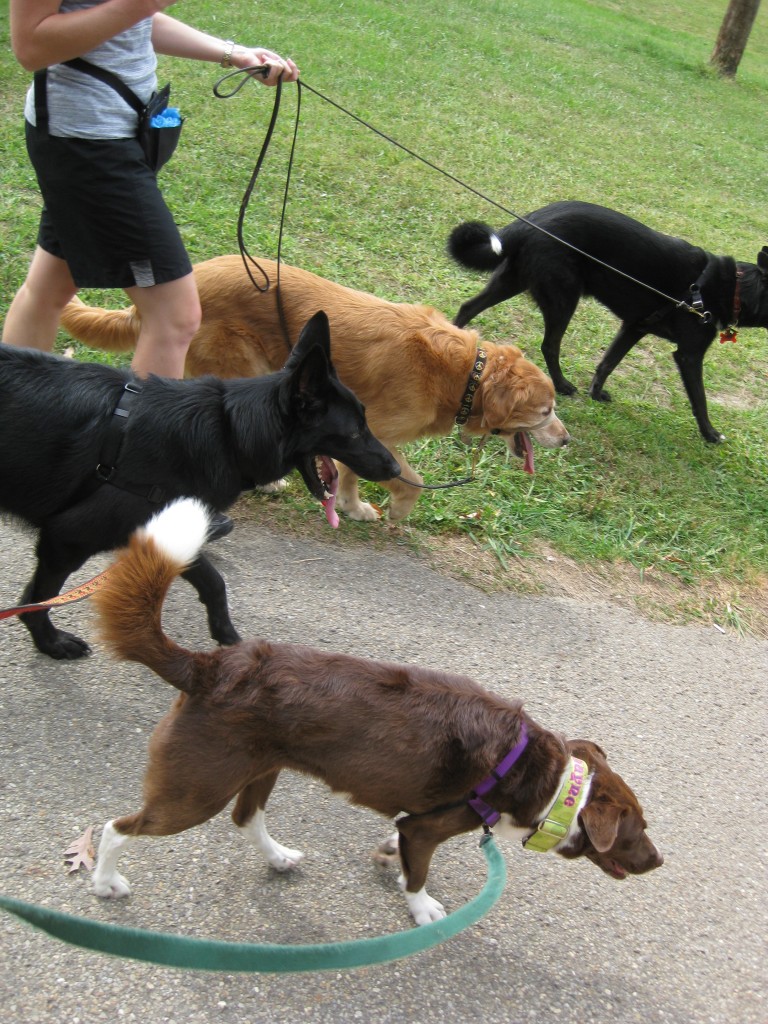STOP Treating Symptoms and Treat The Disease!
This past weekend I went to an all day seminar with a local holistic vet, Dr. Doug Knueven of Beaver Animal Clinic. I have not personally taken my dogs to him, but if I ever had a medical issue with either, he would be the vet I’d go see–I love my current vet clinic in terms of getting quality care for my dogs and cats normal needs but their VERY anti-raw feeding stance (even though I get amazing comments every time I’m their on my dog’s coat, skin, muscle tone, and teeth) and their mostly traditional medicine point of view is limiting and if I was up against some issue, I’d probably go to Dr. Doug. If I come up with a plan to help reduce Shayne’s anxiety surrounding vet offices, I’d love to get her acupuncture and a chiropractic adjustment–not because I’m seeing issues but because she’s 7.5 years old and has been doing crazy stunts for a long time and could probably use an adjustment and could probably benefit from acupuncture.
Anyhow, on to my main topic… during the seminar yesterday Dr. Doug was talking about holistic care and that one of the main principles is that they don’t treat symptoms of a disease because treating the symptoms pushes the disease deeper into the body. Because the symptoms are gone, it will appear that the disease has improved but because it has moved deeper into the body, when it comes back it will be worse and harder to treat.

Treating Shayne’s actual “disease” allows her to not only “not react” but also enjoy walks with unknown dogs (this pic is from the first time she met Ranger and Frodo)
I instantly thought about my mini-rants about people trying to punish the growl or punish the reaction a dog may have. These people are trying to treat the symptom of the disease while ignoring the disease itself. The result most people get is that the symptoms may stop (if the punishment was strong enough)–so they will stop growling or stop reacting–but the disease moves deeper in the body and eventually it will rear its ugly head again. When the symptoms of the disease start showing up again, they are often more severe and harder to get rid of–so instead of a dog who growls, you have a dog who bites and instead of a dog who reacts, you get a dog who attacks or redirects (you may get a dog whose reactions are simply more intense than before as well).
If we think about leash reactivity, for example, in the same way as holistic vets look at wellness, I think it would really help handlers see the best path to resolving the issues. What are the symtoms that are being displayed of the underlying “disease” what is the suspected “disease” causing the symptoms (it’s not really a disease but for the metaphor I’m running with that’s the word I’m using)? Does punishing the symptom to make it disappear help fix the disease? Does whatever training plan one has been doing effect the “disease” causing the symptoms? If not, there is a big risk that the symptoms will be removed but the disease will move deeper into the body (to steal a phrase from holistic medicine). There are likely ways to treat the symptoms that will also treat the disease, but those are less likely to be tired by novice handlers and perhaps even some trainers.
Symptoms (and situation)–getting stiff and staring at dogs (or whatever the trigger) who are more than 75ft away but who are stationary. Stiff, staring, and low growl for dogs walking within 50ft. Staring, barking, and lunging at dogs walking towards them within 30ft. Lunging, snapping, growling, biting, flailing if the dog is facing them but stationary within 15ft.
“Disease”–Fear of dogs (or whatever the trigger) OR Frustration of wanting to greet OR Arousal issues with dogs around (OR etc.)
If we know treating the symptoms is not terribly effective, that leaves us with treating the ‘disease’ causing the symptoms. How do we effectively reduce fear of things–methodical exposures that are just below threshold (desensitization), counter conditioning to build a new Conditioned Emotional Response. How can we effectively reduce frustration–improve a dog’s impulse control, teach them HOW to get what they want so they have a path to get there, often it means counter conditioning a new CER to frustration inducing stimuli. How can we effectively control arousal issues–work on impulse control, teach solid mat work to build a strong reinforcement history for calm behavior and provide it as an alternative to reacting, reinforce attempts to self sooth and reduce arousal like shake offs, stretching and yawning.
It is, in my opinion, a mistake to try to treat the symptoms of behavior while ignoring the disease that is the root cause of the symptoms. The risk of serious fallout is huge when we remove the symptoms but allow the disease to fester and move “deeper into the body.” When the disease eventually returns, the symptoms are often much worse and treating the disease is often more difficult. Although this is nothing new to skilled trainers, I think borrowing the language used in holistic vet care may be helpful for clients to further understand why we progress the way we do and why we don’t just treat the symptom.

A nice way of looking at it/explaining it to more people!
A nice way of looking at it, explaining it!